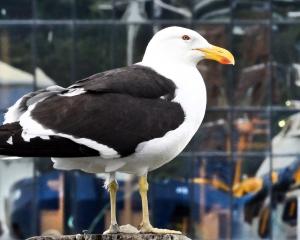
Before European settlement, Slope Hill — bordering Lake Hayes — was flourishing with native plants and species. It later became farmland.
Now a 33ha Department of Conservation reserve, the land has been transformed with 22,000 native plants, put in by the Mana Tāhuna Charitable Trust.
Yesterday, the final 100 trees were planted at the site. The effort was made possible by the Hilton Global Foundation, which granted the reforestation trust $420,000 to complete the work.
Hilton Queenstown general manager Chris Ehmann said the company was humbled to be part of the replanting.
"Queenstown is very focused on doing this and I think that we’re very lucky to be part of it," he said.
There had been 22 different species planted up the hill, divided into five planting zones, based on moisture content of the soil.
At the very bottom of the hill, known as the toe zone, the soil is wetter, so species such as ribbonwoods and coprosmas have been selected as they can handle wet feet.
Moving up the hill there is a section of beech and totara trees, before more dryland species, including 1200 kōwhai that have been planted at the top of the hill.
The ecosystem would help bring back native bird and animal life to the area, such as tui and lizards.
Whakatipu Reforestation Trust former operations manager Karen O’Donahoo said in 50 years’ time, the neighbours "will be complaining of the loud bird song".
Ms O’Donahoo also thanked Mana Tahuna Charitable Trust for its work.
Mana Tahuna had dedicated the last three years to restoring the water quality of Lake Hayes and had planted native trees throughout the catchment as a result.
Between the organisations, more than 65,000 native trees and shrubs have been planted in Lake Hayes surrounds.
In addition to the trees from the Hilton Global Foundation grant, The Reforestation Trust has planted about 10,000 trees on volunteer planting days and Mana Tāhuna has planted another 25,000 trees through Jobs for Nature funding.
Ms O’Donahoo was looking forward to the day when the entire reserve was "a gem of flourishing biodiversity in the heart of the city of Queenstown".












